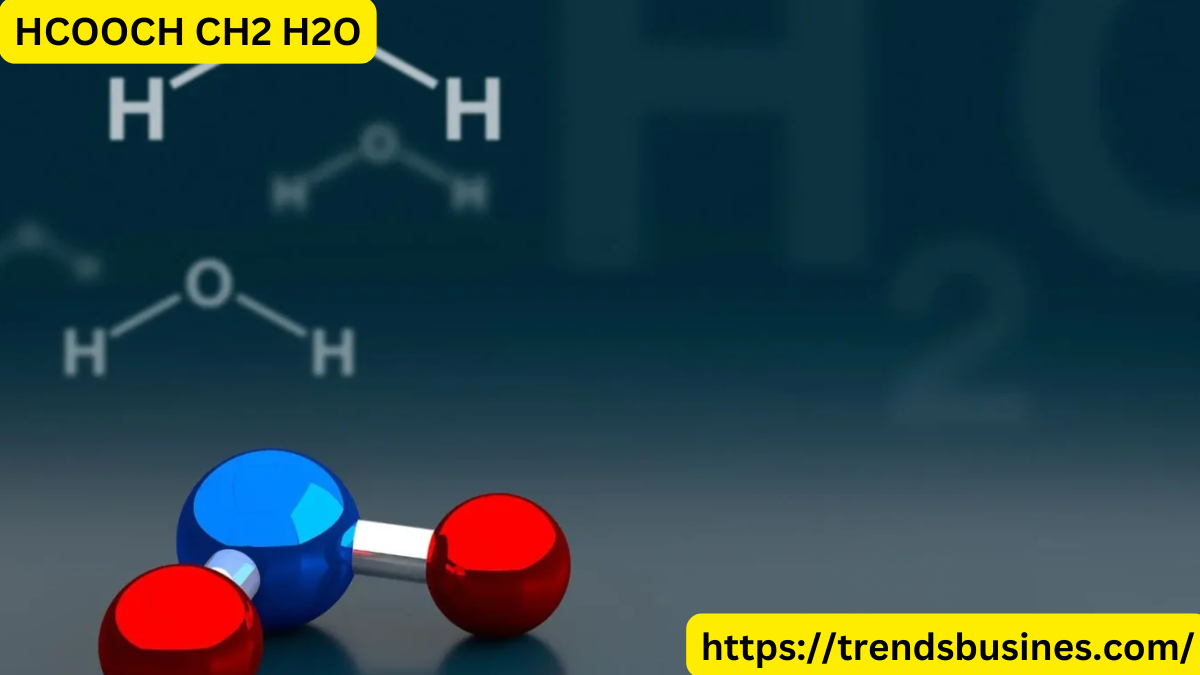The formula “HCOOCH2H2O” represents a chemical compound that combines several molecular groups. To fully comprehend the structure, we need to break down the various components and their interactions. This article will discuss the nature of this compound, its components, and their roles in various chemical processes.
The Chemical Composition
At first glance, the molecular formula “HCOOCH CH2 H2O” may seem complex, but it’s primarily composed of three key groups: the formate group (HCOO), a methylene group (CH2), and a water molecule (H2O). Understanding these individual components is critical for understanding how they work together.
The formate group (HCOO) is a simple ester that is often found in various organic compounds. It consists of a carbonyl group (C=O) bonded to an oxygen atom, which is in turn bonded to a hydrogen atom. This group is typically involved in esterification reactions, where it can interact with alcohols to form esters. Formates are also significant in industrial applications and are found in various biochemical processes.
The methylene group (CH2) is a central part of many organic molecules. It consists of a carbon atom bonded to two hydrogen atoms. The methylene group plays an essential role in connecting different segments of organic molecules, as it often serves as a bridge in larger structures. Methylene groups are widely present in a variety of organic compounds, including hydrocarbons, alcohols, and acids.
Lastly, the water molecule (H2O) is crucial in this compound, indicating the potential involvement of hydration or hydration-related processes. Water molecules can participate in reactions like hydrolysis or act as a solvent in many biological and chemical processes.
When combined, these components form the structure of HCOOCH2H2O, which could represent an ester or a similar organic compound that contains both functional groups and water.
Possible Chemical Behavior
The presence of both an ester group (HCOO) and a water molecule (H2O) suggests that this compound might be involved in reactions like hydrolysis. Hydrolysis is a chemical reaction in which a molecule reacts with water, often breaking down a compound into two parts. In the case of an ester like HCOOCH2, hydrolysis would break the ester bond, potentially releasing an alcohol and a carboxylic acid.
This compound could also be involved in biochemical processes. For instance, formates are intermediates in the metabolism of certain organisms, where they play a role in energy production. The methylene group, with its versatility, could interact with other molecular structures to form more complex molecules. Water’s presence in the formula points to potential hydrating reactions or even the possibility of the compound being in an aqueous solution.
Potential Applications
The compound HCOOCH2H2O could have various uses depending on its detailed structure and behavior. If this compound is indeed a formate ester, it could have applications in industries such as chemicals, pharmaceuticals, and food production. Formates are often used as intermediates in the production of plastics, coatings, and other polymers. They are also used in the synthesis of certain esters and other organic compounds.
Additionally, the presence of a water molecule may make this compound suitable for applications where hydration or solubility is a factor. In biochemical and pharmaceutical contexts, formates and similar compounds could play a role in drug design or as part of metabolic pathways in living organisms.
Chemical Reactions Involving HCOOCH2H2O
In the laboratory, HCOOCH2H2O might undergo various reactions, most notably esterification and hydrolysis. Esterification occurs when an alcohol reacts with a carboxylic acid (or formate in this case), resulting in the formation of an ester and water. Hydrolysis, on the other hand, involves the breakdown of this ester when it reacts with water, which would lead to the formation of the corresponding alcohol and the acid.
Another potential reaction for this compound could involve the interaction with other nucleophiles, such as amines or alcohols, leading to the formation of new organic molecules. The versatility of the methylene group and the reactivity of the formate ester group make HCOOCH2H2O an interesting candidate for use in various chemical synthesis reactions.
Environmental and Biological Significance
Formates and similar organic esters play important roles in biological systems. In humans and other animals, formates are produced during metabolism, particularly when certain amino acids are broken down. They are intermediates in various biochemical cycles, and the metabolism of formate can have significant implications for cellular energy production and detoxification.
From an environmental perspective, formates and other organic HCOOCH CH2 H2O esters are often produced in natural processes, such as plant metabolism and microbial degradation. They can also be found in various industrial by-products. Understanding how these compounds interact with the environment, particularly with respect to their breakdown and potential toxicity, is an essential area of research.
Conclusion
The molecular formula HCOOCH2H2O represents a compound with a formate ester group, a methylene group, and a water molecule. This combination of molecular groups opens the door to a range of chemical reactions and applications. While much of its potential depends on the specific structure and context, the compound could play roles in industrial processes, biochemical pathways, and environmental systems.


